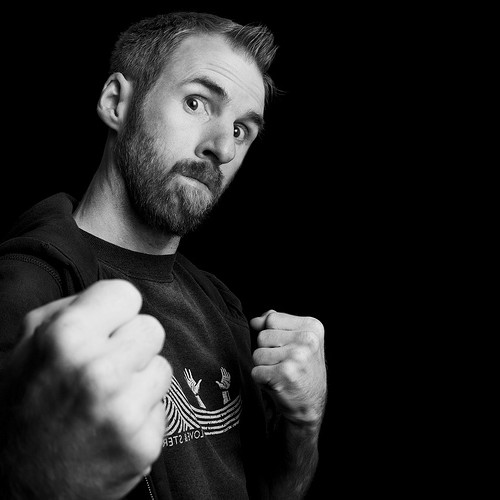Navigating the Complex Landscape of Inner Conflict
Fiction writers (and readers!) love conflict. Conflict is story. Conflict keeps readers on the edge of their seats, turning pages, hoping that all the turmoil will resolve in a satisfying way (but not until the last page).
While much attention is given to outer conflict, inner conflict is a more potent force that breathes life into characters and imbues scenes with depth and resonance. Writers who master the skill to intricately weave inner conflict into their stories craft characters that leap off the page and resonate on a profound level.
Understanding the Complexity of Inner Conflict
At the heart of compelling fiction lies the complex interplay of a character’s inner world. While external conflicts manifest in overt battles and visible obstacles, inner conflict thrives beneath the surface, shaping and impacting characters’ motivations, choices, and growth.
To master the art of infusing your scene with inner turmoil, it is imperative to understand its multifaceted nature. Let’s take a look at six important aspects to inner conflict that you should consider when plotting and writing your scenes.
- The Duality of Desires:
One of the most fundamental aspects of inner conflict is the inherent duality of human desires. Characters are rarely driven by a single, straightforward objective. Instead, their desires often clash, creating a tension that fuels character development and plot progression. These desires can range from the primal to the profound, from immediate gratification to the fulfillment of long-term goals.
Consider a typical scenario: a character torn between the pursuit of career success and the desire for a family. The conflict between these competing “life” desires not only shapes the character’s choices but also allows readers to engage with the complexity of human nature. This inner struggle becomes a microcosm of the universal issues of balancing ambition and personal relationships, making the character relatable and compelling.
Try to come up with two competing desires for your character—both offering benefits and drawbacks, both pulling at her and her heart. Be sure these desires are meaningful to the overarching plot and can create friction externally.
- Moral Quandaries:
Moral dilemmas and ethical choices are fertile grounds for inner conflict. Characters frequently grapple with questions of right and wrong, navigating situations that force them to confront their values, beliefs, and conscience. These moral quandaries introduce shades of gray into the narrative, challenging characters and readers alike to consider the complexities of ethical decision-making.
For instance, a character may face the choice of exposing a friend’s serious wrongdoing, knowing that it will lead to his friend’s downfall. The internal turmoil arising from this moral dilemma can be riveting, as readers witness the character struggle to reconcile his loyalty to a friend with his moral compass. Exploring such moral conflicts adds depth to characters and invites readers to reflect on their own ethical principles.
- The Weight of Past Traumas:
Past traumas and unresolved emotional wounds cast long shadows over a character’s psyche, fueling inner conflict. These scars can manifest as self-doubt, guilt, fear, or even self-sabotage. Delving into the impact of past traumas on a character’s choices and relationships helps us create multifaceted and relatable protagonists.
Imagine a character haunted by the memory of a tragic accident in her youth. This traumatic event has left her with deep emotional scars, affecting her self-esteem and relationships. The inner conflict arises as she grapples with feelings of unworthiness and the fear of repeating past mistakes. By exploring this past trauma or “wound,” writers can enrich the narrative via exploring the profound impact of the past on the present.
- Inner vs. Outer Expectations:
The clash between external expectations and personal desires is a prevalent source of inner conflict in fiction. Characters often find themselves torn between societal or familial pressures and their individual aspirations. This tension between conforming to societal norms and pursuing personal dreams generates profound inner turmoil.
Consider a character from a traditional, tightly-knit community who aspires to break free from the constraints of convention and pursue a creative career. The conflict arises from the character’s expectations for her life crashing headlong with those of her family and community.
- Self-Identity and Authenticity:
The quest for self-identity and authenticity is a recurring theme in literature. Characters often confront pressure from the outside to conform to others’ standards and definition of self. Peer pressure at school, work, the community, and within one’s family can weigh heavily on a character’s self-esteem and create struggles to fit in. Characters who struggle with self-identity are often dealing with fear—of judgment, rejection, and isolation.
If your character has concealed his true identity for fear of societal backlash, they’re forced to navigate the delicate balance between authenticity and conformity. This struggle to be true to oneself while facing external pressures resonates with readers on a universal level, as many grapple with similar challenges in their own lives.
- The Role of External Triggers:
External events, whether dramatic or mundane, can act as triggers for inner conflict. Seemingly insignificant incidents may unearth buried emotions or ignite an internal crisis. These external triggers serve as catalysts, pushing characters to confront their inner demons and make pivotal decisions.
Consider a character whose encounter with a long-lost friend unexpectedly stirs up feelings of resentment and betrayal from the past. This external trigger resurfaces deep-seated emotions and unresolved conflicts, driving the character’s internal turmoil. As readers witness the character’s struggle to come to terms with these resurfaced emotions, they are drawn into the intricate web of inner conflict.
Take Time to Layer the Inner Conflict
Inner conflict is the invisible thread that binds characters to readers, creating stories that resonate on emotional and intellectual levels. By layering into your fiction the duality of desires, moral quandaries, past traumas, external expectations, self-identity, and the role of external triggers, you will craft characters that captivate and inspire. This layering will create an imaginatively rich and believable landscape for readers to navigate as they journey alongside characters as they face and deal with their inner conflict.
What is your character struggling with internally as the plot plays out? Why did you choose this particular dilemma–how does it help your story? Share some thoughts in the comments!
Featured Photo by Markus Spiske on Unsplash
Upcoming Workshop:
7 Essentials to Writing a Riveting Memoir: A step-by-step 4-hour workshop (over two Fridays) to teach you how to write a “cinematic” unforgettable memoir. Register HERE. Dates: Oct. 27 & Nov 3, 1:00-3:00 p.m. Pacific Time.











